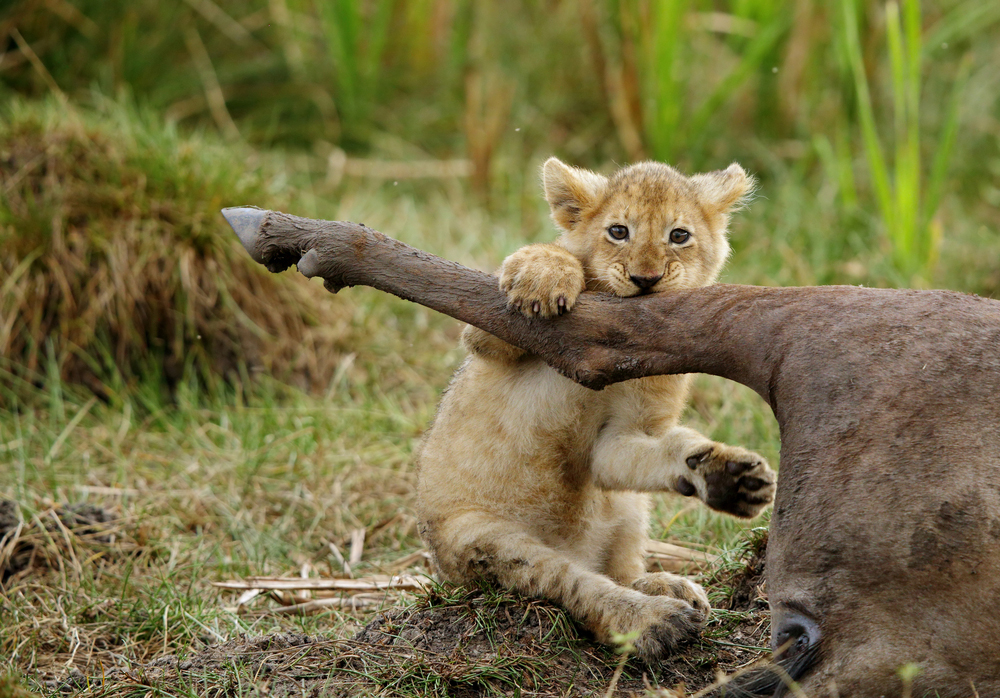Exquisite Corpses: Biologists Share #BestCarcass Photos

If you thought that biologists on Twitter couldn't top the genitalia-celebrating hashtag #JunkOff, you'd be wrong. Dead wrong, in fact. Scientists recently flooded Twitter with photos of dead and decaying animals large and small under the hashtag #BestCarcass.
Nature is not kind, and sometimes, life in the wild ends brutally. Mammals, birds, reptiles, amphibians and insects often succumb in gruesome scenes — many of which have been documented by scientists, who jumped at the opportunity to share their images on Twitter.
The photos of these frequently bloody, disemboweled, decapitated and mummified remains aren't for everyone, but they offer a sobering reminder that any study of life on Earth must include confronting death. And often, that death is very, very messy. [Photos: A Mass Die-Off of the Endangered Saiga Antelope]
The carnage kicked off Jan. 10 with a tweet from Julien Fattebert, a postdoctoral researcher at the Swiss Ornithological Institute. "Seems we have a #BestCarcass competition going," he said in the tweet, which included photos of a female leopard cub that had been killed by lions. Fattebert captured the images in 2012 in South Africa, during research for his Ph.D., he told Live Science in an email.
"While driving around at night radio-tracking leopards, I came across a pride of lions resting on the side of the track," Fattebert said. "Suddenly, one of the lionesses stood up and crossed the track into the woodlands. I could hear some commotion and guessed she made a kill. When I drove in to check, I found this dead leopard cub she had just killed, snapping her spine. I took pictures of the carcass to document the event."
The #BestCarcass hashtag began "as a bit of a fun game between some of us biology tweeps, posting pictures of animals, and what they eat," Fattebert said.
Earlier on Jan. 10, Fattebert had posted a photo of a maggot-covered antelope carcass in response to another scientist's tweet of a carcass photo. More biologists chimed in with their own grisly images, prompting Fattebert to post the leopard photos with the #BestCarcass hashtag, he told Live Science.
Get the world’s most fascinating discoveries delivered straight to your inbox.
Once the hashtag launched, the internet responded most generously. Within a few hours, unrelenting images of death and decay abounded: massive beached and bloating whales, partially eaten zebras and seals, an electrocuted sloth, a bird's bloody legs and pelvis straddling a railing, the lonely head of a bald-faced hornet, a mostly decomposed deer with its remaining hide coated by green algae, and hundreds of frogs frozen under a layer of ice.
Numerous researchers contributed with resounding glee — like David Shiffman, a shark conservation biologist and marine science writer. Shiffman declared in a tweet that he had been waiting for this challenge his entire life. He included a photo of a dolphin that had washed up in South Carolina and appeared to have been bitten in half. Scientists suspected that the culprit was a great white shark, Shiffman had reported earlier for Southern Fried Science.
Images of deceased water-dwelling animals showed some of them floating bottoms-up, such as a hippo photographed by environmental biologist David J. Syzdek in Botswana. Syzdek described the bobbing carcass as "leathery even in water" and quite malodorous.
Heads were optional for quite a few #BestCarcass submissions. Danielle Rivet, a doctoral candidate studying Columbian ground squirrel hibernation at the University of Saskatchewan, tweeted a photo of a fuzzy baby squirrel missing most of its skull, which Rivet described as the work of "a larger, hungry male."
Scientists weren't the only ones sharing gloriously gory images. A striking but unattributed photo tweeted by @tudorcook showed a reindeer literally frozen midstep by the side of a highway, dusted with snow and partly scavenged, with its ribs and spine visible. And Twitter user @anna_caro13 shared an unattributed image of a stag in a snowy landscape, with the antlers, exposed skull and partial neck of a rival stag dangling from his own headgear. The photo was found "floating around the web," @anna_caro13 tweeted later.
Fattebert was surprised and pleased to see the hashtag take off the way it did, because it opened a window into an integral part of nature, he told Live Science.
"Animals die, get killed, eaten, rot, decompose, liquefy. Predation is inherent to ecosystem functioning, and the dead remains need to be broken down by a chain of scavengers and decomposers — from iconic hyenas and vultures, down to insects, worms and micro stuff in the soil," Fattebert said.
"Death is part of the life cycle, and this is also part of our work as biologists, who more often than not have to deal with manky, smelly stuff," he added.
There are many #BestCarcass examples on Twitter to browse through, if you're so inclined. But maybe don't plan on eating your dinner while you do.
Original article on Live Science.

Mindy Weisberger is a science journalist and author of "Rise of the Zombie Bugs: The Surprising Science of Parasitic Mind-Control" (Hopkins Press). She formerly edited for Scholastic and was a channel editor and senior writer for Live Science. She has reported on general science, covering climate change, paleontology, biology and space. Mindy studied film at Columbia University; prior to LS, she produced, wrote and directed media for the American Museum of Natural History in NYC. Her videos about dinosaurs, astrophysics, biodiversity and evolution appear in museums and science centers worldwide, earning awards such as the CINE Golden Eagle and the Communicator Award of Excellence. Her writing has also appeared in Scientific American, The Washington Post, How It Works Magazine and CNN.


